
Abrasion is a common form of wear and tear that occurs on surfaces due to the rubbing or scraping of materials against each other. This can happen in a variety of settings, from industrial machinery to everyday household items. To ensure that products are durable and long-lasting, it is important to adhere to certain product standards for abrasion resistance.There are several key factors that contribute to the abrasion resistance of a product. These include the material composition, surface finish, and design of the product. By following specific standards and guidelines, manufacturers can produce products that are better able to withstand the effects of abrasion.One of the most widely recognized standards for abrasion resistance is the ASTM D4060 Standard Test Method for Abrasion Resistance of Organic Coatings by the Taber Abraser. This test method measures the resistance of coatings to abrasion using a Taber Abraser, which is a machine that simulates the wear and tear that a product may experience in real-world conditions. The test involves rubbing a rotating abrasive wheel against the surface of the coating and measuring the weight loss over a specified number of cycles.Another important standard for abrasion resistance is the ISO 4649 Rubber, vulcanized or thermoplastic -- Determination of abrasion resistance using a rotating cylindrical drum device. This standard is specifically designed for rubber materials and measures their resistance to abrasion using a rotating drum device. The test involves placing a sample of the rubber material on the drum and subjecting it to a specified number of rotations while applying a specified load.In addition to these specific test methods, there are also general guidelines for improving abrasion resistance in products. These include using materials that are inherently resistant to abrasion, such as hard metals or ceramics, and applying protective coatings or finishes to surfaces that are prone to wear and tear. Design considerations, such as reducing friction and minimizing contact between surfaces, can also help to improve abrasion resistance.It is important for manufacturers to consider the specific requirements of their products when determining the appropriate standards for abrasion resistance. For example, products that are intended for heavy-duty industrial use may need to meet more stringent standards than products that are used in a less demanding environment. By following established standards and guidelines, manufacturers can ensure that their products are able to withstand the effects of abrasion and provide long-lasting performance for their customers.In conclusion, product standards for abrasion resistance are essential for ensuring the durability and longevity of products. By following established test methods and guidelines, manufacturers can produce products that are better able to withstand the effects of wear and tear. Adhering to these standards not only benefits the manufacturer by reducing the likelihood of product failure, but also benefits the consumer by providing them with products that are reliable and long-lasting.

Tools are essential for completing a wide range of tasks, from simple household repairs to complex construction projects. Whether you are a professional tradesperson or a DIY enthusiast, having the right tools can make all the difference in the success of your project. In this article, we will explore the key product features of tools and why they are important for getting the job done efficiently and effectively.DurabilityOne of the most important features of a tool is its durability. A durable tool is one that is built to last, even under the most demanding conditions. Whether you are using a hammer to drive nails or a power drill to bore holes, you want a tool that can withstand the wear and tear of regular use. Tools made from high-quality materials, such as steel or aluminum, are more likely to be durable and long-lasting. Look for tools with a solid construction and sturdy design to ensure they can handle the rigors of your work.ErgonomicsAnother important feature of a tool is its ergonomics. Ergonomics refers to the design of a tool to fit comfortably in the user's hand and reduce strain on the body during use. A tool with good ergonomics will have a comfortable grip, balanced weight distribution, and easy-to-reach controls. This can help prevent fatigue and injury, allowing you to work more efficiently and safely. Look for tools with ergonomic handles, adjustable settings, and other features that make them easy to use for extended periods of time.VersatilityVersatility is another key feature to consider when choosing a tool. A versatile tool is one that can be used for multiple tasks, saving you time and money on purchasing separate tools for each job. For example, a multi-tool with interchangeable heads can perform a variety of functions, such as cutting, sanding, and grinding. Look for tools with multiple attachments or settings that allow you to tackle different tasks with ease. Versatile tools can help you streamline your work and increase your productivity.PrecisionPrecision is essential when working with tools, especially for tasks that require accuracy and attention to detail. A precise tool is one that can deliver consistent results with minimal margin of error. Whether you are measuring, cutting, or drilling, you want a tool that can help you achieve precise results every time. Look for tools with accurate measurements, clear markings, and adjustable settings to ensure you can work with precision. Precision tools can help you achieve professional-quality results and avoid costly mistakes.PowerPower is a critical feature for many tools, especially those that require motorized or battery-operated operation. A powerful tool is one that can deliver the necessary force or speed to complete a task quickly and efficiently. Whether you are using a power saw to cut through tough materials or a cordless drill to drive screws, you want a tool that can provide ample power for the job at hand. Look for tools with high wattage, voltage, or torque ratings to ensure they can handle the demands of your work. Powerful tools can help you work faster and more effectively, saving you time and effort.PortabilityPortability is another important feature to consider when choosing a tool. A portable tool is one that is lightweight, compact, and easy to transport from one location to another. Whether you are working on a job site or in a tight space, you want a tool that you can easily carry and maneuver. Look for tools with a compact design, foldable handles, or carrying cases for convenient portability. Portable tools can help you work more efficiently and effectively, even in challenging environments.SafetySafety is paramount when working with tools, as accidents and injuries can occur if proper precautions are not taken. A safe tool is one that is designed with safety features to protect the user from harm. Whether you are using a power tool with a blade guard or a hand tool with a non-slip grip, you want a tool that prioritizes safety. Look for tools with safety certifications, protective guards, and other safety features to ensure you can work with peace of mind. Safe tools can help prevent accidents and injuries, allowing you to focus on completing your tasks without worry.In conclusion, tools are essential for completing a wide range of tasks, and the product features outlined above are key to their effectiveness and efficiency. By choosing tools with durability, ergonomics, versatility, precision, power, portability, and safety, you can ensure that you have the right tools for the job. Whether you are a professional tradesperson or a DIY enthusiast, investing in high-quality tools with these features can help you work more efficiently and effectively, achieving professional-quality results every time.

UV rubber rubbing, also known as UV rubber stamping, is a popular technique used in the printing industry to create high-quality, detailed images on various surfaces. This process involves using a special type of rubber stamp that is coated with a UV-curable ink, which is then exposed to ultraviolet light to cure the ink and transfer the image onto the desired surface.There are several popular models of UV rubber rubbing machines available on the market, each with its own unique features and capabilities. In this article, we will explore some of the most popular models and discuss their key characteristics and benefits.1. Roland VersaUV LEF SeriesThe Roland VersaUV LEF series is a line of UV rubber rubbing machines that are known for their versatility and high-quality output. These machines are capable of printing on a wide range of materials, including paper, cardboard, plastic, and even metal. The LEF series features a flatbed design, which allows for easy loading and unloading of materials, as well as precise positioning of the rubber stamp.One of the key features of the Roland VersaUV LEF series is its ability to print in full color, making it ideal for creating vibrant and detailed images. These machines also offer variable data printing capabilities, allowing users to personalize each print with unique information. Additionally, the LEF series is equipped with UV LED lamps, which provide fast curing times and energy-efficient operation.2. Mimaki UJF SeriesThe Mimaki UJF series is another popular choice for UV rubber rubbing machines, known for their high-speed printing and exceptional print quality. These machines are equipped with advanced printheads that can achieve resolutions of up to 1200 dpi, resulting in sharp and detailed images. The UJF series also features a vacuum table system, which ensures precise registration and consistent print quality.One of the standout features of the Mimaki UJF series is its ability to print on curved and irregular surfaces, making it ideal for printing on a wide range of products, such as promotional items, packaging, and signage. These machines also offer a range of ink options, including white and clear inks, which can be used to create special effects and enhance the overall appearance of the printed image.3. Epson SureColor F570The Epson SureColor F570 is a popular choice for UV rubber rubbing machines, known for its compact design and user-friendly operation. This machine is equipped with Epson's PrecisionCore printhead technology, which delivers fast printing speeds and high-quality output. The SureColor F570 features a roll-to-roll design, which allows for continuous printing of long runs without the need for manual intervention.One of the key features of the Epson SureColor F570 is its dye-sublimation capabilities, which allow users to print on a wide range of fabrics and textiles. This makes the F570 ideal for creating custom apparel, soft signage, and other textile-based products. Additionally, this machine offers a range of connectivity options, including Wi-Fi and Ethernet, making it easy to integrate into existing workflows.4. HP Latex R SeriesThe HP Latex R series is a versatile line of UV rubber rubbing machines that are known for their high productivity and print quality. These machines are equipped with HP's Latex ink technology, which provides vibrant colors, sharp details, and durable prints. The Latex R series features a hybrid design, which allows for printing on both rigid and flexible materials.One of the standout features of the HP Latex R series is its ability to print on a wide range of substrates, including PVC, acrylic, aluminum, and wood. These machines also offer automatic media loading and unloading, as well as advanced color management tools, making it easy to achieve consistent and accurate color reproduction. Additionally, the Latex R series is equipped with HP's PrintOS software, which provides real-time monitoring and control of the printing process.In conclusion, UV rubber rubbing machines are an essential tool for the printing industry, allowing for the creation of high-quality, detailed images on a wide range of surfaces. The models mentioned in this article are some of the most popular choices on the market, each offering unique features and capabilities to meet the needs of different applications. Whether you are looking for speed, versatility, or print quality, there is a UV rubber rubbing machine available to suit your requirements.

Serve is a popular brand that offers a wide range of products to meet the needs of consumers. From household items to personal care products, Serve has become a trusted name in the market. In this article, we will explore some of the popular Serve product types and why they are so well-loved by customers.1. Household Cleaning ProductsServe offers a variety of household cleaning products that are designed to make cleaning tasks easier and more efficient. From multi-surface cleaners to bathroom cleaners, Serve has a solution for every cleaning need. Their products are known for their effectiveness in removing dirt and grime, leaving surfaces sparkling clean. Customers love Serve's household cleaning products for their powerful formulas and pleasant scents.2. Laundry DetergentsServe also offers a range of laundry detergents that are designed to effectively clean clothes and remove tough stains. Their detergents are formulated to be gentle on fabrics while still providing a deep clean. Customers appreciate Serve's laundry detergents for their ability to leave clothes smelling fresh and looking bright. Whether you have sensitive skin or need a detergent for tough stains, Serve has a product that will meet your needs.3. Personal Care ProductsServe's personal care products are also popular among consumers. From body washes to shampoos, Serve offers a range of products that are designed to keep you looking and feeling your best. Their products are formulated with high-quality ingredients that are gentle on the skin and hair. Customers love Serve's personal care products for their luxurious textures and invigorating scents.4. Air FreshenersServe's air fresheners are another popular product type that customers love. Whether you prefer sprays, gels, or plug-ins, Serve has a variety of options to keep your home smelling fresh and inviting. Their air fresheners are known for their long-lasting scents that effectively eliminate odors. Customers appreciate Serve's air fresheners for their ability to create a pleasant atmosphere in any room.5. Dishwashing ProductsServe's dishwashing products are also a favorite among consumers. From dish soaps to dishwasher detergents, Serve offers a range of products that are designed to make dishwashing a breeze. Their products are formulated to cut through grease and grime, leaving dishes clean and spotless. Customers love Serve's dishwashing products for their powerful formulas and easy-to-use packaging.In conclusion, Serve offers a wide range of popular product types that cater to the needs of consumers. From household cleaning products to personal care items, Serve has become a trusted brand that customers rely on for quality and effectiveness. Whether you are looking for a powerful cleaner or a luxurious body wash, Serve has a product that will meet your needs. With their commitment to quality and innovation, Serve continues to be a top choice for consumers looking for reliable and effective products.

Software product models are essential for companies to effectively develop, market, and sell their software products. These models help companies determine the best way to package and deliver their software to customers, as well as how to generate revenue from their products. There are several popular software product models that companies can choose from, each with its own advantages and disadvantages. In this article, we will explore some of the most popular software product models and discuss how they can benefit companies in the software industry.1. Perpetual License ModelThe perpetual license model is one of the most traditional software product models, where customers pay a one-time fee to purchase the software and own it indefinitely. This model allows customers to use the software for as long as they want without any additional costs, making it a popular choice for companies that want to provide a one-time purchase option for their customers.One of the main advantages of the perpetual license model is that it provides a steady stream of revenue for companies, as customers pay upfront for the software. This model also allows companies to generate revenue from maintenance and support services, as customers may need assistance with the software over time.However, the perpetual license model can also have some drawbacks. For example, companies may need to invest in ongoing development and updates to keep the software relevant and competitive in the market. Additionally, customers may be hesitant to purchase software upfront without the option to try it first, which can limit sales opportunities.2. Subscription ModelThe subscription model is becoming increasingly popular in the software industry, where customers pay a recurring fee to access the software for a set period of time. This model allows companies to generate recurring revenue from customers, as they pay for the software on a monthly or annual basis.One of the main advantages of the subscription model is that it provides a predictable and steady stream of revenue for companies, as customers pay regularly for the software. This model also allows companies to offer flexible pricing options, such as different subscription tiers with varying features and pricing.Additionally, the subscription model can help companies build long-term relationships with customers, as they have ongoing access to the software and can receive regular updates and support. This can lead to higher customer retention rates and increased customer loyalty.However, the subscription model can also have some drawbacks. For example, customers may be hesitant to commit to a recurring payment for software, especially if they are unsure of its value. Companies may also need to invest in ongoing development and updates to keep customers engaged and satisfied with the software.3. Freemium ModelThe freemium model is a popular software product model that offers a basic version of the software for free, with the option to upgrade to a premium version with additional features and functionality for a fee. This model allows companies to attract a large user base with the free version of the software, while also generating revenue from customers who choose to upgrade to the premium version.One of the main advantages of the freemium model is that it allows companies to reach a wide audience of potential customers with the free version of the software. This can help companies build brand awareness and attract new customers who may be hesitant to pay for software upfront.Additionally, the freemium model can help companies upsell customers to the premium version of the software, as they can experience the basic features and functionality of the software before deciding to upgrade. This can lead to higher conversion rates and increased revenue for companies.However, the freemium model can also have some drawbacks. For example, companies may need to invest in ongoing development and updates to keep customers engaged with the software and encourage them to upgrade to the premium version. Additionally, companies may need to carefully balance the features and functionality of the free and premium versions of the software to ensure that customers see value in upgrading.4. Usage-Based ModelThe usage-based model is a software product model where customers pay based on their usage of the software, such as the number of users, transactions, or data storage. This model allows companies to align their pricing with the value that customers receive from the software, as they only pay for what they use.One of the main advantages of the usage-based model is that it provides a flexible pricing structure for customers, as they can scale their usage of the software up or down based on their needs. This can help companies attract a wide range of customers, from small businesses to large enterprises, who may have different usage requirements.Additionally, the usage-based model can help companies generate revenue from customers who may only need the software for a limited time or for specific projects. This can lead to increased sales opportunities and revenue for companies.However, the usage-based model can also have some drawbacks. For example, companies may need to carefully monitor and track customer usage to ensure accurate billing and invoicing. Additionally, customers may be hesitant to commit to a usage-based pricing model if they are unsure of their future usage needs.5. Open Source ModelThe open source model is a software product model where the source code of the software is made available to the public for free, allowing developers to modify and distribute the software as they see fit. This model allows companies to build a community of developers who can contribute to the software and help improve its functionality and features.One of the main advantages of the open source model is that it allows companies to leverage the expertise and creativity of a global community of developers to enhance the software. This can lead to faster development cycles, increased innovation, and a more robust and feature-rich product.Additionally, the open source model can help companies build brand awareness and establish themselves as thought leaders in the industry. This can lead to increased visibility and credibility for companies, as well as potential partnerships and collaborations with other organizations.However, the open source model can also have some drawbacks. For example, companies may need to carefully manage and monitor the contributions of developers to ensure that the software remains secure and stable. Additionally, companies may need to invest in ongoing development and updates to keep the software competitive in the market.In conclusion, there are several popular software product models that companies can choose from to effectively develop, market, and sell their software products. Each model has its own advantages and disadvantages, and companies should carefully consider their goals, target market, and resources when selecting a software product model. By choosing the right model for their software product, companies can maximize revenue, attract customers, and build a successful and sustainable business in the software industry.
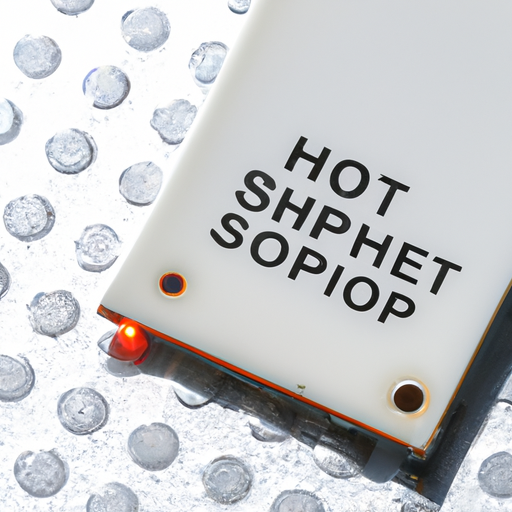
Hot spot programming adapters are essential tools for developers and engineers who need to program and debug microcontrollers and other embedded systems. These adapters come in various models, each with its own features and capabilities. In this article, we will explore the prices of some popular hot spot programming adapter models and discuss their key features.1. Segger J-LinkThe Segger J-Link is a high-quality hot spot programming adapter that is widely used in the industry. It supports a wide range of microcontrollers and offers fast and reliable programming and debugging capabilities. The price of the Segger J-Link varies depending on the model and features, but you can expect to pay anywhere from $100 to $500 for a basic model.2. ST-LINK/V2The ST-LINK/V2 is another popular hot spot programming adapter that is commonly used with STM32 microcontrollers. It offers fast programming speeds and supports a wide range of debugging features. The price of the ST-LINK/V2 is relatively affordable, with basic models starting at around $20.3. Atmel-ICEThe Atmel-ICE is a versatile hot spot programming adapter that supports a wide range of Atmel microcontrollers. It offers advanced debugging capabilities and can be used with Atmel Studio for seamless integration with the development environment. The price of the Atmel-ICE varies depending on the model and features, but you can expect to pay around $100 to $200 for a basic model.4. PICkit 3The PICkit 3 is a hot spot programming adapter that is specifically designed for programming and debugging PIC microcontrollers. It offers fast programming speeds and supports a wide range of debugging features. The price of the PICkit 3 is relatively affordable, with basic models starting at around $50.5. USBaspThe USBasp is a low-cost hot spot programming adapter that is commonly used with AVR microcontrollers. It offers basic programming and debugging capabilities and is a popular choice for hobbyists and students. The price of the USBasp is very affordable, with basic models starting at around $10.In conclusion, hot spot programming adapters are essential tools for developers and engineers who work with microcontrollers and embedded systems. The price of these adapters varies depending on the model and features, but you can expect to pay anywhere from $10 to $500 for a high-quality adapter. When choosing a hot spot programming adapter, it is important to consider your specific requirements and budget to find the best option for your needs.

As a programmer, there are certain product standards that must be adhered to in order to ensure the quality and functionality of the software being developed. These standards help to maintain consistency, readability, and maintainability of the code, as well as ensure that the software meets the needs and expectations of the end users. In this article, we will discuss some of the key product standards that programmers should follow in their work.1. Code QualityOne of the most important product standards for programmers is code quality. This includes writing clean, well-structured, and efficient code that is easy to read and understand. Good code quality is essential for ensuring that the software is maintainable and scalable, and for minimizing the risk of bugs and errors. Programmers should follow best practices for coding, such as using meaningful variable names, commenting their code, and following coding conventions.2. TestingAnother important product standard for programmers is testing. Testing is essential for ensuring that the software functions as intended and meets the requirements of the end users. Programmers should write unit tests to test individual components of the software, as well as integration tests to test how different components work together. Automated testing tools can help to streamline the testing process and ensure that the software is thoroughly tested before it is released.3. DocumentationDocumentation is another key product standard for programmers. Good documentation is essential for helping other developers understand the code, as well as for helping end users understand how to use the software. Programmers should document their code, including writing comments to explain the purpose of each function and variable, as well as writing user manuals and other documentation to help end users navigate the software.4. SecuritySecurity is a critical product standard for programmers, especially in today's digital age where cyber threats are constantly evolving. Programmers should follow best practices for security, such as encrypting sensitive data, validating user input, and implementing secure authentication and authorization mechanisms. Regular security audits and penetration testing can help to identify and address potential security vulnerabilities in the software.5. PerformancePerformance is another important product standard for programmers. Software should be optimized for speed and efficiency, in order to provide a smooth and responsive user experience. Programmers should profile their code to identify performance bottlenecks, and optimize algorithms and data structures to improve performance. Load testing can help to ensure that the software can handle a high volume of users without slowing down or crashing.6. ComplianceCompliance with industry standards and regulations is another important product standard for programmers, especially in regulated industries such as healthcare and finance. Programmers should be aware of relevant standards and regulations, such as HIPAA for healthcare data or PCI DSS for payment card data, and ensure that the software meets these requirements. Compliance audits can help to ensure that the software is in compliance with relevant standards and regulations.In conclusion, there are several key product standards that programmers should follow in their work. These standards help to ensure the quality, functionality, and security of the software being developed, as well as ensure that the software meets the needs and expectations of the end users. By following best practices for coding, testing, documentation, security, performance, and compliance, programmers can create high-quality software that delivers value to users and meets the requirements of the business.

Choosing the right spot sensor evaluation board can be a daunting task, especially with the wide range of options available on the market. However, by considering a few key factors, you can make an informed decision that meets your specific needs and requirements. In this article, we will discuss the important considerations to keep in mind when selecting a spot sensor evaluation board.1. Sensor Type: The first step in choosing a spot sensor evaluation board is to determine the type of sensor you need. There are various types of spot sensors available, such as temperature sensors, pressure sensors, proximity sensors, and more. Consider the specific application for which you need the sensor and choose a board that supports the appropriate sensor type.2. Compatibility: It is essential to ensure that the spot sensor evaluation board is compatible with the sensor you plan to use. Check the specifications of the board to verify that it supports the sensor type, communication protocol, and interface requirements. Compatibility issues can lead to connectivity problems and hinder the performance of the sensor evaluation board.3. Features and Functionality: Evaluate the features and functionality offered by the spot sensor evaluation board. Look for boards that provide a wide range of capabilities, such as data logging, real-time monitoring, calibration options, and customizable settings. Consider your specific requirements and choose a board that offers the necessary features to meet your needs.4. Accuracy and Precision: Accuracy and precision are crucial factors to consider when selecting a spot sensor evaluation board. Look for boards that offer high accuracy and precision levels to ensure reliable and consistent measurements. Check the specifications of the board to determine the resolution, sensitivity, and measurement range to ensure it meets your requirements.5. Ease of Use: Choose a spot sensor evaluation board that is user-friendly and easy to set up and operate. Consider the availability of software tools, documentation, and technical support to assist you in configuring and using the board effectively. A user-friendly interface and intuitive design can streamline the evaluation process and enhance the overall user experience.6. Cost: Cost is an important consideration when choosing a spot sensor evaluation board. Evaluate your budget and compare the prices of different boards to find a cost-effective option that meets your requirements. Consider the long-term value and benefits of the board in relation to its price to make an informed decision.7. Reputation and Reviews: Before making a purchase, research the reputation of the manufacturer and read reviews from other users to gauge the quality and reliability of the spot sensor evaluation board. Look for feedback on the performance, durability, and customer support provided by the manufacturer to ensure you are investing in a reputable product.In conclusion, choosing the right spot sensor evaluation board requires careful consideration of factors such as sensor type, compatibility, features, accuracy, ease of use, cost, and reputation. By evaluating these key factors and conducting thorough research, you can select a board that meets your specific needs and provides reliable and accurate sensor measurements. Remember to prioritize your requirements and preferences to make an informed decision that will benefit your application in the long run.
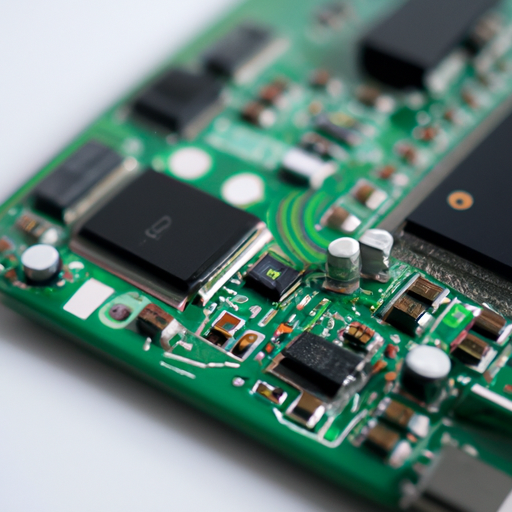
The production process of computing amplifier assessment boards is a crucial step in the manufacturing of electronic devices. These boards are essential components in computers, amplifiers, and other electronic devices, as they help to amplify and process signals for optimal performance. In this article, we will explore the mainstream production process of computing amplifier assessment boards, from design to testing.Design Phase:The first step in the production process of computing amplifier assessment boards is the design phase. This phase involves creating a detailed schematic of the board, including the layout of components, connections, and signal paths. Design engineers use specialized software to create these schematics, ensuring that all components are placed correctly and that the board will function as intended.Once the schematic is complete, the design engineers create a physical layout of the board using computer-aided design (CAD) software. This layout includes the placement of components on the board, as well as the routing of signal paths between components. Design engineers must carefully consider factors such as signal integrity, power distribution, and thermal management during this phase to ensure the board will function properly.Prototype Development:After the design phase is complete, the next step in the production process is prototype development. Prototype boards are manufactured using the design schematics and layouts created in the previous phase. These boards are typically produced in small quantities for testing and validation purposes.During prototype development, manufacturers use specialized equipment such as pick-and-place machines and reflow ovens to assemble the components onto the board. Once the components are soldered in place, the board is tested for functionality and performance. Design engineers may make adjustments to the design based on the results of these tests, refining the board for optimal performance.Mass Production:Once the prototype boards have been validated and approved, the production process moves into mass production. During this phase, manufacturers produce large quantities of computing amplifier assessment boards using automated assembly processes. These processes are designed to maximize efficiency and consistency in the production of the boards.Manufacturers use high-speed pick-and-place machines to accurately place components onto the boards, followed by reflow ovens to solder the components in place. Automated optical inspection (AOI) systems are used to check for defects in the solder joints and components, ensuring the quality of the boards.Testing and Quality Control:After the boards have been assembled, they undergo rigorous testing and quality control procedures to ensure they meet the required specifications. Testing may include functional testing to verify that the board operates as intended, as well as performance testing to measure signal quality and amplification capabilities.In addition to testing, manufacturers also implement quality control measures throughout the production process to ensure consistency and reliability in the boards. This may include inspections of components, solder joints, and overall board quality to identify and address any issues that may arise.Packaging and Shipping:Once the boards have passed testing and quality control, they are packaged and prepared for shipping to customers. Packaging may include anti-static bags or trays to protect the boards during transit, as well as labeling and documentation for identification and tracking purposes.Manufacturers work closely with logistics partners to ensure the boards are shipped safely and efficiently to customers around the world. This may involve coordinating with shipping carriers, customs officials, and other parties to ensure timely delivery of the boards.Conclusion:The production process of computing amplifier assessment boards is a complex and intricate process that requires careful planning, design, and execution. From the initial design phase to prototype development, mass production, testing, and shipping, manufacturers must adhere to strict quality control measures to ensure the boards meet the required specifications and perform as intended.By following a systematic approach to production, manufacturers can produce high-quality computing amplifier assessment boards that meet the demands of the electronics industry. With advancements in technology and manufacturing processes, the production of these boards continues to evolve, enabling manufacturers to produce boards that are more efficient, reliable, and cost-effective for a wide range of applications.
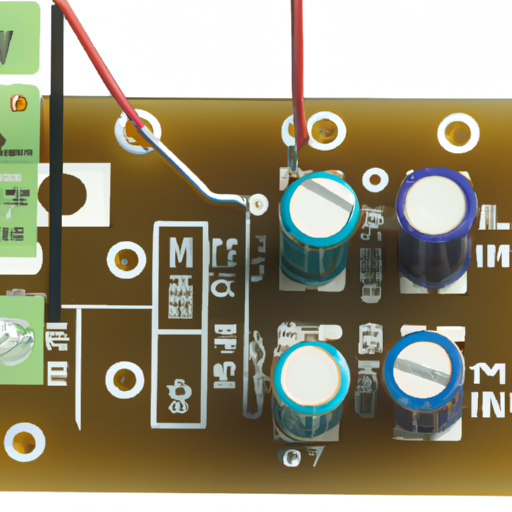
Choosing the right spot linear voltage regulator board is crucial for ensuring the proper functioning of your electronic devices. With so many options available in the market, it can be overwhelming to make the right choice. In this article, we will discuss the factors to consider when choosing a spot linear voltage regulator board and provide some tips to help you make an informed decision.What is a spot linear voltage regulator board?A spot linear voltage regulator board is a device that regulates the voltage of an electrical circuit to ensure a stable and consistent output voltage. It is commonly used in electronic devices to provide a constant voltage supply to sensitive components such as microcontrollers, sensors, and other integrated circuits. The spot linear voltage regulator board works by adjusting the input voltage to maintain a steady output voltage, regardless of fluctuations in the input voltage or load conditions.Factors to consider when choosing a spot linear voltage regulator board1. Voltage regulation: The primary function of a spot linear voltage regulator board is to regulate the voltage of an electrical circuit. It is important to choose a board that can provide the required output voltage with minimal deviation from the set value. Look for a board with a high level of voltage regulation to ensure the stability of your electronic devices.2. Current rating: The current rating of the spot linear voltage regulator board determines the maximum amount of current that it can supply to the load. It is important to choose a board with a current rating that is sufficient for your application to prevent overheating and damage to the components. Make sure to calculate the maximum current requirements of your circuit and choose a board with a higher current rating to ensure reliable operation.3. Input voltage range: The input voltage range of the spot linear voltage regulator board determines the range of input voltages that it can accept. It is important to choose a board with an input voltage range that is compatible with your power source to prevent damage to the board and the connected components. Make sure to check the input voltage requirements of your circuit and choose a board that can accommodate the required input voltage range.4. Efficiency: The efficiency of the spot linear voltage regulator board determines how effectively it can convert the input voltage into the desired output voltage. A higher efficiency board will waste less power as heat, resulting in lower operating temperatures and longer lifespan. Look for a board with a high efficiency rating to ensure optimal performance and energy savings.5. Size and form factor: The size and form factor of the spot linear voltage regulator board are important considerations, especially if you have limited space in your electronic device. Choose a board that is compact and lightweight to fit into tight spaces and minimize the overall footprint of your circuit. Consider the mounting options and connectors of the board to ensure easy installation and compatibility with your existing setup.6. Thermal management: Heat dissipation is a common issue with spot linear voltage regulator boards, especially when operating at high currents or in confined spaces. Choose a board with adequate thermal management features such as heat sinks, thermal pads, or fans to prevent overheating and ensure reliable operation. Consider the ambient temperature and airflow conditions of your application to select a board with the appropriate thermal management capabilities.7. Protection features: To ensure the safety and longevity of your electronic devices, it is important to choose a spot linear voltage regulator board with built-in protection features. Look for boards with overvoltage protection, overcurrent protection, thermal shutdown, and reverse polarity protection to safeguard against potential damage from voltage spikes, short circuits, and other electrical faults. These protection features will help to extend the lifespan of your components and prevent costly repairs or replacements.Tips for choosing the right spot linear voltage regulator board1. Determine the voltage and current requirements of your circuit: Before choosing a spot linear voltage regulator board, calculate the voltage and current requirements of your electronic circuit to ensure compatibility with the board. Consider the input voltage range, output voltage, and maximum current draw of your components to select a board that can meet the power demands of your application.2. Research different brands and models: There are many manufacturers and models of spot linear voltage regulator boards available in the market, each with its own specifications and features. Take the time to research and compare different brands to find a board that meets your requirements and budget. Read reviews, check ratings, and seek recommendations from other users to make an informed decision.3. Consider future expansion and upgrades: When choosing a spot linear voltage regulator board, consider the scalability and flexibility of the board for future expansion and upgrades. Choose a board with additional features such as adjustable output voltage, multiple output channels, or remote monitoring capabilities to accommodate future changes in your electronic device.4. Consult with a professional: If you are unsure about which spot linear voltage regulator board to choose for your application, consider consulting with a professional engineer or technician. They can provide expert advice and recommendations based on your specific requirements and help you select the right board for optimal performance and reliability.In conclusion, choosing the right spot linear voltage regulator board is essential for ensuring the proper functioning of your electronic devices. By considering factors such as voltage regulation, current rating, input voltage range, efficiency, size, thermal management, protection features, and following the tips mentioned above, you can make an informed decision and select a board that meets your requirements and budget. Remember to research different brands and models, consult with a professional if needed, and prioritize safety and reliability when choosing a spot linear voltage regulator board for your electronic circuit.

Expanding board is a term used to describe the process of increasing the size of a company's board of directors. This can be done for a variety of reasons, such as to bring in new perspectives, expertise, or diversity to the board. In recent years, there has been a growing trend towards expanding boards, as companies seek to adapt to a rapidly changing business environment and meet the demands of stakeholders.The market outlook for expanding board is positive, as more and more companies recognize the benefits of having a diverse and inclusive board of directors. Research has shown that companies with diverse boards tend to outperform their peers in terms of financial performance, innovation, and overall governance. In addition, having a diverse board can help companies better understand and respond to the needs and preferences of their customers, employees, and other stakeholders.One of the key drivers of the trend towards expanding boards is the increasing focus on corporate governance and accountability. In recent years, there has been a growing emphasis on the importance of having independent and diverse boards that can provide effective oversight and guidance to management. This has led many companies to reevaluate the composition of their boards and consider adding new directors with different backgrounds and perspectives.Another factor driving the trend towards expanding boards is the changing nature of business and the need for companies to adapt to new challenges and opportunities. In today's fast-paced and complex business environment, companies need to be able to respond quickly to changing market conditions, technological advancements, and regulatory requirements. Having a diverse and inclusive board can help companies navigate these challenges more effectively and make better decisions for the long-term success of the business.In addition, expanding boards can also help companies attract and retain top talent. Research has shown that employees are more likely to stay with a company that values diversity and inclusion, and having a diverse board can send a strong signal to employees that the company is committed to creating a culture of equality and opportunity. This can help companies attract and retain top talent, improve employee engagement and morale, and ultimately drive better business results.Despite the many benefits of expanding boards, there are also challenges and considerations that companies need to keep in mind. For example, adding new directors to the board can increase the complexity of decision-making and communication processes, and may require additional resources and support to ensure that new directors are effectively onboarded and integrated into the board. In addition, companies need to carefully consider the skills, experience, and backgrounds of potential new directors to ensure that they have the right mix of expertise and perspectives to add value to the board.Overall, the market outlook for expanding board is positive, as companies recognize the benefits of having a diverse and inclusive board of directors. By adding new directors with different backgrounds and perspectives, companies can improve their governance, decision-making, and overall performance, and better position themselves for long-term success in a rapidly changing business environment. As companies continue to adapt to new challenges and opportunities, expanding boards will play an increasingly important role in driving innovation, growth, and sustainability in the marketplace.

The MCU (Microcontroller Unit) evaluation boards are essential tools for developers and engineers to test and evaluate the performance of microcontrollers before integrating them into their projects. These boards come with various features and capabilities that make them popular among the mainstream MCU users. In this article, we will discuss the top 10 MCU evaluation board popular models in the mainstream.1. Arduino Uno: The Arduino Uno is one of the most popular MCU evaluation boards in the mainstream. It is based on the ATmega328P microcontroller and comes with a variety of input/output pins, making it suitable for a wide range of projects. The Arduino Uno is easy to use and is supported by a large community of developers, making it an ideal choice for beginners and experienced users alike.2. Raspberry Pi: The Raspberry Pi is another popular MCU evaluation board that is widely used in the mainstream. It is a single-board computer that is capable of running various operating systems and software applications. The Raspberry Pi is highly versatile and can be used for a wide range of projects, from simple electronics projects to complex robotics applications.3. STM32 Nucleo: The STM32 Nucleo is a series of MCU evaluation boards based on the STM32 microcontroller family. These boards come with a variety of features, including multiple input/output pins, built-in sensors, and connectivity options. The STM32 Nucleo boards are easy to use and are supported by a large community of developers, making them popular among mainstream MCU users.4. ESP32: The ESP32 is a popular MCU evaluation board that is based on the ESP32 microcontroller. It comes with built-in Wi-Fi and Bluetooth connectivity, making it ideal for IoT (Internet of Things) projects. The ESP32 is highly versatile and can be used for a wide range of applications, from home automation to industrial monitoring.5. Teensy: The Teensy is a series of MCU evaluation boards that are based on the ARM Cortex-M4 microcontroller. These boards come with a variety of features, including multiple input/output pins, built-in USB connectivity, and support for various programming languages. The Teensy boards are popular among mainstream MCU users for their ease of use and versatility.6. BeagleBone Black: The BeagleBone Black is a popular MCU evaluation board that is based on the AM335x microprocessor. It comes with built-in Ethernet connectivity, making it ideal for networking applications. The BeagleBone Black is highly versatile and can be used for a wide range of projects, from robotics to home automation.7. Particle Photon: The Particle Photon is a popular MCU evaluation board that is based on the STM32 microcontroller. It comes with built-in Wi-Fi connectivity, making it ideal for IoT projects. The Particle Photon is easy to use and is supported by a large community of developers, making it popular among mainstream MCU users.8. Adafruit Feather: The Adafruit Feather is a series of MCU evaluation boards that are based on various microcontrollers, including the ESP32 and the STM32. These boards come with a variety of features, including multiple input/output pins, built-in sensors, and connectivity options. The Adafruit Feather boards are popular among mainstream MCU users for their ease of use and versatility.9. Nordic nRF52: The Nordic nRF52 is a popular MCU evaluation board that is based on the nRF52 microcontroller. It comes with built-in Bluetooth connectivity, making it ideal for wireless applications. The Nordic nRF52 is highly versatile and can be used for a wide range of projects, from wearables to smart home devices.10. TI LaunchPad: The TI LaunchPad is a series of MCU evaluation boards that are based on various microcontrollers, including the MSP430 and the Tiva C Series. These boards come with a variety of features, including multiple input/output pins, built-in sensors, and connectivity options. The TI LaunchPad boards are popular among mainstream MCU users for their reliability and performance.In conclusion, the MCU evaluation boards mentioned above are some of the most popular models in the mainstream. These boards come with a variety of features and capabilities that make them ideal for a wide range of projects, from simple electronics projects to complex IoT applications. Whether you are a beginner or an experienced developer, these boards are sure to meet your needs and help you bring your ideas to life.

The field-programmable gate array (FPGA) evaluation board industry is constantly evolving, with new trends emerging to meet the demands of designers and developers looking to create innovative solutions using FPGA technology. These evaluation boards serve as a platform for testing and prototyping FPGA designs, allowing users to experiment with different configurations and functionalities before moving on to full-scale production.One of the key trends in the FPGA evaluation board industry is the increasing demand for boards that offer higher performance and greater flexibility. As FPGA technology continues to advance, designers are looking for evaluation boards that can support more complex designs and applications. This has led to the development of boards with higher logic capacity, faster processing speeds, and more advanced features such as integrated peripherals and connectivity options.Another trend in the FPGA evaluation board industry is the growing popularity of boards that support open-source development tools and frameworks. Open-source tools provide designers with greater flexibility and control over their FPGA designs, allowing them to customize and optimize their projects to meet specific requirements. This trend has led to the development of evaluation boards that are compatible with popular open-source tools such as the Xilinx Vivado Design Suite and the Intel Quartus Prime software.In addition to performance and flexibility, cost-effectiveness is also a key consideration for designers when choosing an FPGA evaluation board. As FPGA technology becomes more accessible and affordable, there is a growing demand for evaluation boards that offer a balance between performance and cost. Manufacturers are responding to this trend by developing boards that provide a high level of functionality at a competitive price point, making FPGA technology more accessible to a wider range of users.Another trend in the FPGA evaluation board industry is the integration of artificial intelligence (AI) and machine learning (ML) capabilities. With the increasing demand for AI and ML applications in various industries, there is a growing need for evaluation boards that can support these advanced technologies. Manufacturers are developing boards with specialized hardware accelerators and optimized architectures to support AI and ML algorithms, enabling designers to create high-performance solutions for applications such as image recognition, natural language processing, and autonomous driving.The rise of the Internet of Things (IoT) is also driving trends in the FPGA evaluation board industry. With the proliferation of connected devices and sensors, there is a growing demand for evaluation boards that can support IoT applications. Manufacturers are developing boards with integrated wireless connectivity options such as Wi-Fi, Bluetooth, and LoRa, enabling designers to create IoT solutions that can communicate with other devices and cloud services.Security is another important trend in the FPGA evaluation board industry, as designers look for ways to protect their designs and data from unauthorized access and tampering. Manufacturers are developing boards with built-in security features such as secure boot mechanisms, encryption capabilities, and hardware-based security modules to ensure the integrity and confidentiality of FPGA designs.Overall, the FPGA evaluation board industry is experiencing rapid growth and innovation, driven by the increasing demand for high-performance, flexible, cost-effective, and secure solutions. As FPGA technology continues to advance, we can expect to see further developments in evaluation boards that support emerging technologies such as AI, IoT, and security, enabling designers to create cutting-edge solutions for a wide range of applications.

Digital to Analog Converters (DACs) are essential components in modern electronic devices, converting digital signals into analog signals for various applications such as audio playback, video processing, and sensor interfacing. With the increasing demand for high-quality audio and video playback, the market for DACs has grown significantly in recent years. As a result, there are now a wide variety of DAC models available on the market, each offering different features and performance levels.To help consumers navigate the crowded DAC market, many websites and publications have formed DAC Evaluation Committees to review and compare popular DAC models. These committees typically consist of audio enthusiasts, engineers, and industry professionals who evaluate DACs based on criteria such as sound quality, build quality, features, and value for money. In this article, we will take a closer look at some of the popular DAC Evaluation Committees and the models they have recommended.1. Audio Science Review (ASR)Audio Science Review is a popular online forum and website dedicated to audio equipment reviews and measurements. The ASR DAC Evaluation Committee is known for its rigorous testing methodology, which includes objective measurements of DAC performance using specialized equipment. Some of the popular DAC models recommended by ASR include the Topping D90, SMSL M500, and Schiit Modi 3.2. What Hi-Fi?What Hi-Fi? is a well-known audio and video equipment review publication that has been around for over 40 years. The What Hi-Fi? DAC Evaluation Committee consists of experienced audio journalists who evaluate DACs based on sound quality, build quality, and features. Some of the popular DAC models recommended by What Hi-Fi? include the Chord Mojo, AudioQuest DragonFly Red, and Cambridge Audio DacMagic Plus.3. Head-FiHead-Fi is a popular online forum and community for headphone and audio enthusiasts. The Head-Fi DAC Evaluation Committee is made up of experienced audiophiles who evaluate DACs based on sound quality, compatibility with headphones, and value for money. Some of the popular DAC models recommended by Head-Fi include the iFi Audio Zen DAC, FiiO Q5s, and Audioengine D1.4. StereophileStereophile is a well-respected audio equipment review publication that has been around for over 50 years. The Stereophile DAC Evaluation Committee consists of experienced audio engineers and reviewers who evaluate DACs based on sound quality, technical performance, and value for money. Some of the popular DAC models recommended by Stereophile include the Benchmark DAC3, Mytek Brooklyn DAC+, and Chord Hugo 2.5. The Absolute SoundThe Absolute Sound is a high-end audio equipment review publication that has been around for over 40 years. The Absolute Sound DAC Evaluation Committee consists of experienced audio reviewers and industry professionals who evaluate DACs based on sound quality, build quality, and features. Some of the popular DAC models recommended by The Absolute Sound include the dCS Bartók, PS Audio DirectStream DAC, and Ayre Acoustics QX-5 Twenty.In conclusion, DAC Evaluation Committees play a crucial role in helping consumers make informed decisions when purchasing DACs. By evaluating and comparing popular DAC models based on sound quality, build quality, features, and value for money, these committees provide valuable insights that can help consumers find the best DAC for their needs. Whether you are a casual listener or a serious audiophile, consulting DAC Evaluation Committees can help you find the perfect DAC for your audio setup.

The purchase price of the latest SMPS Evaluation Committee is $500,000. This committee is responsible for evaluating and selecting the best SMPS (Switched-Mode Power Supply) products for use in various applications. The committee consists of experts in the field of power electronics and is tasked with ensuring that the selected products meet the highest standards of performance, reliability, and efficiency.The purchase price of the committee includes the cost of recruiting and hiring the members, as well as providing them with the necessary resources and support to carry out their duties effectively. This includes access to the latest testing equipment, software tools, and technical documentation needed to evaluate the performance of the SMPS products under consideration.The committee's work is crucial in ensuring that only the best SMPS products are selected for use in critical applications such as telecommunications, industrial automation, and medical devices. By rigorously evaluating the performance of these products, the committee helps to ensure that they meet the stringent requirements of these industries and deliver the highest levels of performance and reliability.In addition to evaluating the performance of SMPS products, the committee also plays a key role in providing feedback to manufacturers on how they can improve their products to better meet the needs of customers. This feedback is invaluable in helping manufacturers to continuously improve their products and stay ahead of the competition in the rapidly evolving field of power electronics.The purchase price of the committee also includes the cost of organizing and hosting regular meetings and conferences where members can discuss the latest developments in the field of power electronics and share their insights and expertise with one another. These meetings provide a valuable forum for members to exchange ideas, collaborate on research projects, and stay up-to-date on the latest trends and technologies in the industry.Overall, the purchase price of the latest SMPS Evaluation Committee represents a significant investment in ensuring that only the best SMPS products are selected for use in critical applications. By bringing together a team of experts with the necessary resources and support, the committee plays a crucial role in driving innovation and excellence in the field of power electronics.
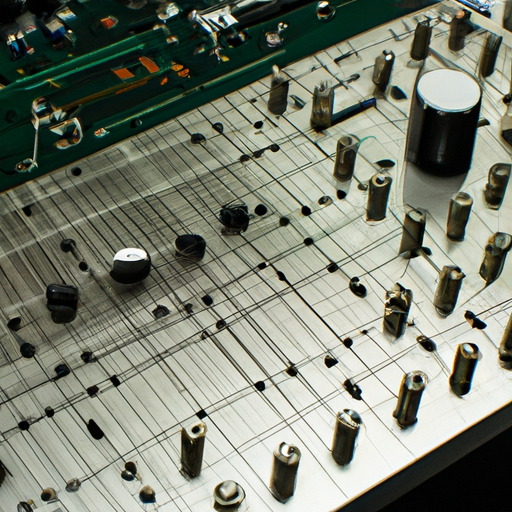
Audio amplifier boards are essential components in audio systems, providing the necessary power and amplification for speakers to produce sound. The production process for these boards involves several key steps to ensure quality and performance. In this article, we will explore the mainstream audio amplifier board production process in detail.1. Design and DevelopmentThe first step in the production process of audio amplifier boards is the design and development phase. This involves creating a schematic and layout for the board, specifying the components to be used, and determining the overall functionality and performance requirements. Designers must consider factors such as power output, impedance matching, signal-to-noise ratio, and distortion levels to ensure the board meets the desired specifications.During this phase, designers may also conduct simulations and testing to verify the performance of the board before moving on to the next step. This helps identify any potential issues or improvements that need to be made before production begins.2. Component ProcurementOnce the design is finalized, the next step in the production process is component procurement. This involves sourcing the necessary electronic components, such as resistors, capacitors, transistors, and integrated circuits, from suppliers. It is essential to ensure that the components meet the required specifications and quality standards to ensure the reliability and performance of the amplifier board.Manufacturers may work with multiple suppliers to secure the necessary components and negotiate pricing and delivery schedules. Quality control measures, such as incoming inspection and testing, are often implemented to verify the authenticity and functionality of the components before they are used in production.3. PCB FabricationAfter the components are procured, the next step in the production process is PCB fabrication. The printed circuit board (PCB) serves as the foundation for the amplifier board, providing the necessary connections and mounting points for the components. PCB fabrication involves several key steps, including:- PCB layout: The design files are used to create the layout of the PCB, specifying the placement of components, traces, and vias.
- PCB manufacturing: The PCB is fabricated using specialized equipment and processes, such as etching, drilling, and plating, to create the necessary circuitry and connections.
- Quality control: The fabricated PCBs are inspected and tested to ensure they meet the required specifications and quality standards before proceeding to the next step.4. Assembly and SolderingOnce the PCBs are fabricated, the next step in the production process is assembly and soldering. This involves placing the components onto the PCB and soldering them in place to create the electrical connections. Automated assembly equipment, such as pick-and-place machines and reflow ovens, are often used to streamline the assembly process and ensure consistency and accuracy.During assembly, it is essential to follow proper soldering techniques and quality control measures to prevent defects, such as cold joints or solder bridges, which can affect the performance and reliability of the amplifier board. Visual inspection and testing are often conducted to verify the integrity of the solder joints and components before moving on to the next step.5. Testing and Quality AssuranceAfter assembly, the amplifier boards undergo testing and quality assurance to verify their functionality and performance. This involves conducting various tests, such as power output, frequency response, distortion levels, and impedance matching, to ensure the boards meet the specified requirements.Manufacturers may use specialized test equipment, such as oscilloscopes, signal generators, and spectrum analyzers, to measure and analyze the performance of the amplifier boards. Any issues or deviations from the desired specifications are identified and addressed through troubleshooting and adjustments to the design or assembly process.6. Packaging and ShippingOnce the amplifier boards have passed testing and quality assurance, the final step in the production process is packaging and shipping. The boards are typically packaged in protective materials, such as anti-static bags or foam inserts, to prevent damage during transit. They are then labeled and prepared for shipping to customers or distributors.Manufacturers may also provide documentation, such as user manuals or datasheets, with the amplifier boards to help customers install and use them properly. Additionally, manufacturers may offer warranty and support services to address any issues or concerns that may arise after the boards are delivered.In conclusion, the production process for audio amplifier boards involves several key steps, from design and development to testing and shipping. By following a systematic approach and implementing quality control measures, manufacturers can ensure the reliability and performance of the amplifier boards, meeting the needs of customers and end-users in the audio industry.

The evaluation board for analog-to-digital converters (ADCs) is an essential tool for testing and validating the performance of these crucial components in various industries. ADCs are used in a wide range of applications, including telecommunications, medical devices, automotive systems, and industrial automation. As such, the evaluation board plays a critical role in ensuring the accuracy and reliability of ADCs in these industries.Several industries contain important patents related to ADC evaluation boards, as companies strive to develop innovative solutions that improve the performance and functionality of these boards. In this article, we will explore some of the key industries that are driving advancements in ADC evaluation board technology and the patents that are shaping the future of this important tool.Telecommunications IndustryThe telecommunications industry is one of the largest users of ADCs, as these components are essential for converting analog signals into digital data for transmission over networks. ADC evaluation boards are used to test the performance of ADCs in telecommunications equipment, such as base stations, routers, and switches.Several companies in the telecommunications industry have developed innovative ADC evaluation board solutions and have secured important patents related to these technologies. For example, Qualcomm, a leading provider of telecommunications equipment, has patented a high-performance ADC evaluation board that offers improved signal-to-noise ratio and dynamic range for testing ADCs in 5G networks.Medical Devices IndustryThe medical devices industry is another important user of ADCs, as these components are used in a wide range of medical devices, such as MRI machines, ultrasound scanners, and patient monitoring systems. ADC evaluation boards are essential for testing the performance of ADCs in these critical medical devices to ensure accurate and reliable data acquisition.Companies in the medical devices industry have developed specialized ADC evaluation board solutions tailored to the unique requirements of medical applications. For example, Medtronic, a leading medical device manufacturer, has patented an ADC evaluation board that offers enhanced noise reduction and signal processing capabilities for testing ADCs in medical imaging equipment.Automotive Systems IndustryThe automotive systems industry is also a significant user of ADCs, as these components are used in various automotive systems, such as engine control units, infotainment systems, and advanced driver assistance systems. ADC evaluation boards are essential for testing the performance of ADCs in automotive applications to ensure safe and reliable operation.Companies in the automotive systems industry have developed specialized ADC evaluation board solutions that meet the stringent requirements of automotive applications. For example, Bosch, a leading automotive supplier, has patented an ADC evaluation board that offers high-speed data acquisition and low-power consumption for testing ADCs in automotive systems.Industrial Automation IndustryThe industrial automation industry is another important user of ADCs, as these components are used in various industrial automation systems, such as PLCs, robotics, and motion control systems. ADC evaluation boards are essential for testing the performance of ADCs in industrial automation applications to ensure precise and reliable data acquisition.Companies in the industrial automation industry have developed specialized ADC evaluation board solutions that meet the demanding requirements of industrial applications. For example, Siemens, a leading provider of industrial automation solutions, has patented an ADC evaluation board that offers high-resolution data acquisition and real-time signal processing capabilities for testing ADCs in industrial automation systems.In conclusion, several industries contain important patents related to ADC evaluation boards, as companies strive to develop innovative solutions that improve the performance and functionality of these critical tools. The telecommunications, medical devices, automotive systems, and industrial automation industries are driving advancements in ADC evaluation board technology, and the patents secured by companies in these industries are shaping the future of this essential tool. As ADCs continue to play a crucial role in a wide range of applications, the development of advanced ADC evaluation board solutions will be essential for ensuring the accuracy and reliability of these important components in various industries.

Analog-to-digital converters (ADCs) are essential components in many electronic systems, converting analog signals into digital data for processing and analysis. ADC evaluation boards are tools used by engineers and designers to test and evaluate the performance of ADCs in real-world applications. These evaluation boards typically come with a variety of features and functionalities to help users assess the performance, accuracy, and reliability of the ADCs.There are several key product categories of ADC evaluation boards that cater to different needs and requirements of users. These categories include:1. Resolution: ADC evaluation boards are available in different resolutions, ranging from 8-bit to 24-bit or higher. The resolution of an ADC determines the number of discrete levels it can represent in the digital output. Higher resolution ADCs provide better accuracy and precision in converting analog signals to digital data. Evaluation boards with different resolution options allow users to test and compare the performance of ADCs with varying levels of precision.2. Sampling rate: The sampling rate of an ADC refers to the number of samples it can take per second. Higher sampling rates allow the ADC to capture fast-changing signals with greater accuracy. ADC evaluation boards come with different sampling rate options, ranging from a few kilohertz to several gigahertz. Users can choose evaluation boards with the sampling rate that best suits their application requirements.3. Input voltage range: The input voltage range of an ADC evaluation board determines the maximum and minimum voltage levels that the ADC can accurately convert. Different ADCs have different input voltage ranges, and evaluation boards are designed to accommodate these variations. Users can select evaluation boards with the input voltage range that matches their specific application needs.4. Interface options: ADC evaluation boards come with various interface options to connect the ADC to external devices or systems. Common interface options include USB, Ethernet, SPI, I2C, and parallel interfaces. These interfaces allow users to communicate with the ADC, configure its settings, and transfer data for analysis. Evaluation boards with multiple interface options provide flexibility and compatibility with different systems and devices.5. Power supply: ADC evaluation boards require a stable and reliable power supply to operate effectively. Evaluation boards come with built-in power management circuits and options for external power sources. Users can choose evaluation boards with different power supply options, such as USB-powered, battery-powered, or external power supply, depending on their application requirements.6. Software support: ADC evaluation boards often come with software tools and drivers to facilitate testing, configuration, and data analysis. These software tools provide a user-friendly interface for controlling the ADC, setting parameters, and visualizing the data. Some evaluation boards also come with software development kits (SDKs) for customizing and integrating the ADC into specific applications.7. Evaluation features: ADC evaluation boards may include additional features for testing and evaluating the performance of the ADC. These features can include built-in signal generators, oscilloscope functions, digital filters, and calibration tools. Evaluation boards with advanced evaluation features provide users with more comprehensive testing capabilities and insights into the performance of the ADC.In conclusion, ADC evaluation boards are essential tools for testing and evaluating the performance of ADCs in various applications. These boards come in different product categories based on resolution, sampling rate, input voltage range, interface options, power supply, software support, and evaluation features. By selecting the right ADC evaluation board that meets their specific requirements, engineers and designers can ensure the accurate and reliable operation of ADCs in their electronic systems.

Assessment kits are essential tools used in various fields such as education, healthcare, and business to evaluate and measure an individual's skills, knowledge, or abilities. These kits typically include a set of standardized tests, questionnaires, and other assessment tools that are used to gather data and provide insights into an individual's performance or capabilities. In this article, we will explore the common production processes involved in creating assessment kits.1. Needs Assessment: The first step in producing an assessment kit is to conduct a needs assessment to determine the purpose and objectives of the kit. This involves identifying the target audience, the specific skills or abilities to be assessed, and the desired outcomes of the assessment. The needs assessment helps to guide the development of the assessment tools and ensures that they are relevant and effective.2. Content Development: Once the needs assessment is complete, the next step is to develop the content for the assessment kit. This may involve creating test items, questionnaires, scoring rubrics, and other assessment tools that align with the objectives of the assessment. Content development often requires input from subject matter experts, psychologists, and other professionals to ensure the validity and reliability of the assessment tools.3. Pilot Testing: Before finalizing the assessment kit, it is important to conduct pilot testing to evaluate the effectiveness and usability of the assessment tools. This involves administering the tests to a small sample of individuals and collecting feedback on the clarity, relevance, and accuracy of the assessment items. Pilot testing helps to identify any potential issues or errors in the assessment kit that need to be addressed before it is released to a wider audience.4. Production and Packaging: Once the assessment kit has been developed and tested, it is ready for production and packaging. This may involve printing test booklets, assembling scoring materials, and packaging the assessment tools in a user-friendly format. The production process also includes quality control checks to ensure that the assessment kit meets the required standards and specifications.5. Distribution and Training: After the assessment kit has been produced and packaged, it is ready for distribution to users. This may involve selling the kit to schools, healthcare facilities, or businesses, or providing it to individuals for self-assessment. In some cases, training may be required to ensure that users understand how to administer the assessments correctly and interpret the results accurately.6. Continuous Improvement: The production process for assessment kits does not end with distribution. It is important to continuously monitor and evaluate the effectiveness of the assessment tools and make improvements as needed. This may involve updating test items, revising scoring rubrics, or incorporating new technologies to enhance the assessment process.In conclusion, the production processes for assessment kits involve a series of steps from needs assessment to continuous improvement. By following these processes, producers can create high-quality assessment tools that provide valuable insights into an individual's skills, knowledge, and abilities. Whether used in education, healthcare, or business, assessment kits play a crucial role in helping individuals reach their full potential and achieve their goals.
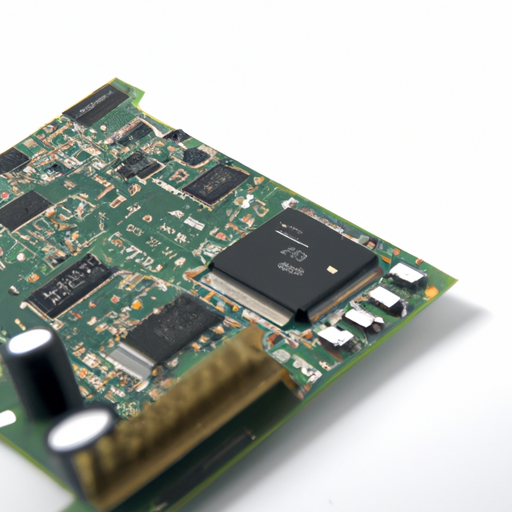
Development board accessories are essential components that enhance the functionality and usability of development boards. These accessories are designed to provide additional features, connectivity options, and customization capabilities to development boards, making them more versatile and powerful tools for prototyping, testing, and developing electronic projects.Development boards, also known as prototyping boards or evaluation boards, are hardware platforms that are used by engineers, hobbyists, and students to design, prototype, and test electronic circuits and systems. These boards typically come with a microcontroller or microprocessor, input/output pins, and other essential components that allow users to program and interact with the board to create various electronic projects.While development boards are powerful tools on their own, they often lack certain features and functionalities that are necessary for specific projects or applications. This is where development board accessories come into play. These accessories are add-on components that can be connected to development boards to expand their capabilities and provide additional features that are not available on the board itself.There are various types of development board accessories available in the market, each serving a specific purpose and catering to different needs. Some of the most common development board accessories include:1. Expansion boards: Expansion boards, also known as shields or hats, are add-on boards that can be connected to development boards to provide additional features and functionalities. These boards typically come with sensors, actuators, communication modules, and other components that can be used to enhance the capabilities of the development board.2. Display modules: Display modules are accessories that can be connected to development boards to provide visual feedback and user interface capabilities. These modules come in various sizes and types, including LCD displays, OLED displays, and LED matrices, and can be used to display text, graphics, and other information.3. Communication modules: Communication modules are accessories that enable development boards to communicate with other devices and systems. These modules come with various communication interfaces, such as Wi-Fi, Bluetooth, Ethernet, and GSM, and can be used to establish wireless or wired connections with other devices for data exchange and control.4. Power supplies: Power supplies are essential accessories that provide the necessary voltage and current to power development boards and connected components. These accessories come in various forms, including batteries, power adapters, and voltage regulators, and ensure that the development board operates reliably and efficiently.5. Prototyping accessories: Prototyping accessories, such as breadboards, jumper wires, and connectors, are essential tools for building and testing electronic circuits on development boards. These accessories provide a convenient and flexible platform for connecting components and creating prototypes quickly and easily.6. Enclosures and cases: Enclosures and cases are accessories that protect development boards from dust, moisture, and physical damage. These accessories come in various shapes and sizes and provide a secure and durable housing for development boards, ensuring their longevity and reliability.Overall, development board accessories play a crucial role in enhancing the functionality and usability of development boards. By using these accessories, users can expand the capabilities of their development boards, customize them for specific projects, and create more sophisticated and advanced electronic systems. Whether you are a beginner or an experienced electronics enthusiast, investing in development board accessories can greatly enhance your prototyping and development experience.

The Evaluation board scenario includes a wide range of industries, each with its own unique challenges and opportunities. From technology and healthcare to finance and manufacturing, the Evaluation board plays a crucial role in assessing the performance and potential of companies across various sectors. In this article, we will explore some of the key industries that the Evaluation board scenario encompasses and discuss the importance of effective evaluation in driving business success.1. TechnologyThe technology industry is one of the most dynamic and fast-paced sectors in the global economy. Companies in this industry are constantly innovating and developing new products and services to meet the ever-changing needs of consumers. The Evaluation board plays a critical role in assessing the performance of technology companies, evaluating their market position, competitive advantage, and growth potential. By analyzing key metrics such as revenue growth, profit margins, and market share, the Evaluation board can provide valuable insights into the health and future prospects of technology companies.2. HealthcareThe healthcare industry is another key sector that the Evaluation board scenario covers. With an aging population and increasing demand for healthcare services, companies in this industry face unique challenges in delivering high-quality care while managing costs effectively. The Evaluation board evaluates healthcare companies based on a variety of factors, including patient outcomes, cost efficiency, and regulatory compliance. By conducting thorough evaluations, the Evaluation board can help healthcare companies identify areas for improvement and drive better outcomes for patients and stakeholders.3. FinanceThe finance industry is a critical component of the global economy, providing essential services such as banking, insurance, and investment management. Companies in the finance sector are subject to strict regulatory oversight and must demonstrate strong financial performance to attract investors and customers. The Evaluation board plays a key role in assessing the financial health and stability of finance companies, analyzing key metrics such as asset quality, capital adequacy, and profitability. By conducting rigorous evaluations, the Evaluation board can help finance companies identify risks and opportunities and make informed decisions to drive long-term success.4. ManufacturingThe manufacturing industry is a cornerstone of the global economy, producing a wide range of products from automobiles and electronics to consumer goods and industrial equipment. Companies in the manufacturing sector face challenges such as supply chain disruptions, changing consumer preferences, and increasing competition from overseas. The Evaluation board evaluates manufacturing companies based on factors such as production efficiency, product quality, and market demand. By conducting thorough evaluations, the Evaluation board can help manufacturing companies identify opportunities for cost savings, process improvements, and product innovation to drive growth and profitability.5. RetailThe retail industry is a highly competitive sector that encompasses a wide range of businesses, from brick-and-mortar stores to e-commerce platforms. Companies in the retail sector must adapt to changing consumer behavior, technological advancements, and market trends to stay competitive. The Evaluation board plays a crucial role in assessing the performance of retail companies, analyzing key metrics such as sales growth, customer satisfaction, and inventory turnover. By conducting comprehensive evaluations, the Evaluation board can help retail companies identify opportunities for growth, optimize their operations, and enhance the customer experience to drive long-term success.In conclusion, the Evaluation board scenario includes a diverse range of industries, each with its own unique challenges and opportunities. By conducting thorough evaluations, the Evaluation board can provide valuable insights into the performance and potential of companies across various sectors, helping them make informed decisions to drive business success. Effective evaluation is essential for companies to identify risks and opportunities, optimize their operations, and achieve sustainable growth in today's competitive business environment.

Tape allocation is a crucial feature in the world of data storage and management. It allows organizations to efficiently allocate and manage their tape resources, ensuring that data is stored and accessed in a secure and organized manner. In this article, we will explore the key product features of tape allocation and discuss how it can benefit businesses of all sizes.1. Automated tape allocation: One of the key features of tape allocation is its ability to automate the process of allocating tapes to specific tasks or applications. This helps organizations streamline their data storage processes and ensures that tapes are used efficiently and effectively. By automating tape allocation, businesses can reduce the risk of human error and ensure that data is stored in the most appropriate location.2. Dynamic tape allocation: Tape allocation also allows for dynamic allocation of tapes based on changing storage needs. This means that organizations can easily adjust their tape allocation settings to accommodate fluctuations in data storage requirements. For example, if a business experiences a sudden increase in data volume, they can quickly allocate additional tapes to meet the demand. This flexibility ensures that organizations can adapt to changing storage needs without disrupting their operations.3. Tape pool management: Tape allocation includes features for managing tape pools, which are groups of tapes that are allocated for specific purposes or applications. With tape pool management, organizations can easily create, modify, and delete tape pools as needed. This allows businesses to organize their tapes in a logical and efficient manner, making it easier to allocate tapes to specific tasks or applications.4. Tape tracking and monitoring: Another important feature of tape allocation is its ability to track and monitor tape usage. This includes tracking the status of tapes, such as whether they are in use, available for allocation, or offline. By monitoring tape usage, organizations can ensure that tapes are being used effectively and identify any potential issues or bottlenecks in their storage infrastructure.5. Tape encryption and security: Tape allocation also includes features for encrypting and securing data stored on tapes. This helps organizations protect sensitive information and ensure compliance with data security regulations. By encrypting data on tapes, businesses can prevent unauthorized access and safeguard their data from potential security threats.6. Tape retention policies: Tape allocation allows organizations to define retention policies for their tapes, specifying how long data should be stored on a tape before it is deleted or archived. This helps businesses manage their data storage resources more effectively and ensures that data is retained for the appropriate amount of time. By setting retention policies, organizations can comply with data retention regulations and avoid unnecessary data storage costs.7. Integration with backup and archiving solutions: Tape allocation can be integrated with backup and archiving solutions, allowing organizations to seamlessly allocate tapes for data backup and archiving purposes. This integration ensures that data is backed up and archived in a secure and organized manner, making it easier to recover data in the event of a disaster or data loss.In conclusion, tape allocation is a critical feature for organizations that rely on tape storage for their data storage needs. By automating tape allocation, managing tape pools, tracking tape usage, and ensuring data security, businesses can optimize their tape storage resources and improve their overall data management processes. With its flexibility and scalability, tape allocation is a valuable tool for businesses of all sizes looking to efficiently manage their data storage infrastructure.
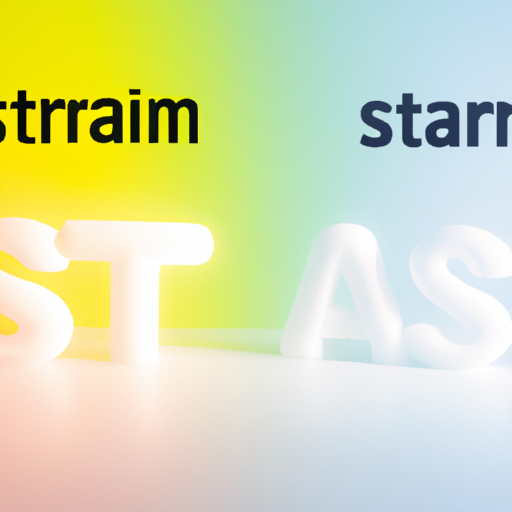
Mainstream film models refer to the various approaches and styles that filmmakers use to create movies that appeal to a wide audience. These models can vary greatly in terms of storytelling techniques, visual aesthetics, and overall tone. In this article, we will explore some of the key differences between mainstream film models and how they have evolved over time.One of the most popular mainstream film models is the Hollywood blockbuster. These films are typically big-budget productions with high production values, elaborate special effects, and star-studded casts. Blockbusters are often characterized by their fast-paced action sequences, dramatic storylines, and larger-than-life characters. Examples of Hollywood blockbusters include franchises like Marvel's Avengers series, the Fast and Furious movies, and the Transformers series.Another mainstream film model is the romantic comedy. These films typically focus on the ups and downs of romantic relationships, often with a comedic twist. Romantic comedies are known for their witty dialogue, charming characters, and feel-good endings. Some popular examples of romantic comedies include When Harry Met Sally, Pretty Woman, and Love Actually.In contrast to the lighthearted nature of romantic comedies, the thriller genre is another popular mainstream film model that focuses on suspense, tension, and excitement. Thrillers often feature high-stakes situations, complex plots, and unexpected twists. Some well-known thriller films include The Silence of the Lambs, Se7en, and Gone Girl.One of the most enduring mainstream film models is the coming-of-age story. These films typically follow a young protagonist as they navigate the challenges of growing up and finding their place in the world. Coming-of-age stories often explore themes of identity, friendship, and self-discovery. Some classic examples of coming-of-age films include Stand by Me, The Breakfast Club, and Boyhood.In recent years, there has been a growing trend towards more diverse and inclusive mainstream film models. Filmmakers are increasingly exploring stories and perspectives that have traditionally been underrepresented in mainstream cinema. This includes films that center on characters from marginalized communities, as well as stories that challenge traditional gender roles and stereotypes.One example of this trend is the rise of the superhero film model. While superhero movies have been a staple of mainstream cinema for decades, recent years have seen a shift towards more diverse and inclusive superhero stories. Films like Black Panther, Wonder Woman, and Captain Marvel have all featured strong, complex characters from underrepresented backgrounds, and have been celebrated for their positive representation of diversity.Another example of this trend is the growing popularity of independent films that challenge traditional mainstream film models. These films often feature unconventional storytelling techniques, experimental visuals, and thought-provoking themes. Independent filmmakers are pushing the boundaries of what is considered mainstream cinema, and are creating films that are both artistically ambitious and socially relevant.Overall, mainstream film models are constantly evolving and changing to reflect the diverse tastes and interests of audiences. From Hollywood blockbusters to independent films, there is a wide range of styles and genres to choose from. Whether you enjoy action-packed thrillers, heartwarming romantic comedies, or thought-provoking dramas, there is sure to be a mainstream film model that suits your preferences. As filmmakers continue to push the boundaries of storytelling and creativity, we can expect to see even more diverse and innovative mainstream film models in the years to come.
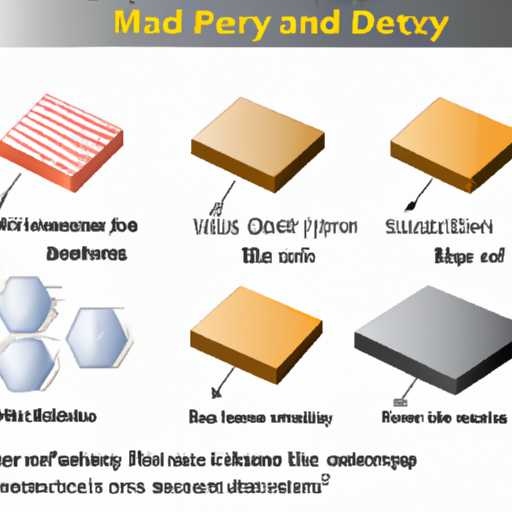
2D materials have gained significant attention in recent years due to their unique properties and potential applications in various industries. These materials, which are only one or two atoms thick, exhibit exceptional mechanical, electrical, and optical properties that make them highly desirable for a wide range of applications. In this article, we will explore the key product categories of 2D materials and their potential impact on the future of technology.1. ElectronicsOne of the most promising applications of 2D materials is in the field of electronics. Graphene, a single layer of carbon atoms arranged in a hexagonal lattice, is one of the most well-known 2D materials and has shown great potential for use in electronic devices. Its high electrical conductivity, thermal conductivity, and mechanical strength make it an ideal candidate for applications such as flexible displays, sensors, and transistors.Other 2D materials, such as transition metal dichalcogenides (TMDs) and black phosphorus, also show promise for use in electronics. TMDs, for example, have a bandgap that allows for the development of semiconducting devices, while black phosphorus has tunable bandgaps that make it suitable for use in optoelectronic devices.Overall, 2D materials have the potential to revolutionize the electronics industry by enabling the development of faster, smaller, and more energy-efficient devices.2. Energy storageAnother key product category for 2D materials is energy storage. Graphene, for example, has been widely studied for use in supercapacitors and batteries due to its high surface area, electrical conductivity, and mechanical strength. These properties make graphene an ideal material for improving the performance and efficiency of energy storage devices.In addition to graphene, other 2D materials such as MXenes and phosphorene have also shown promise for use in energy storage applications. MXenes, which are two-dimensional carbides and nitrides, have high conductivity and can store a large amount of energy, making them ideal for use in supercapacitors. Phosphorene, on the other hand, has a high theoretical capacity for lithium-ion batteries, making it a promising candidate for next-generation energy storage devices.Overall, 2D materials have the potential to revolutionize the energy storage industry by enabling the development of high-performance, long-lasting batteries and supercapacitors.3. OptoelectronicsOptoelectronics is another key product category for 2D materials. These materials have unique optical properties that make them ideal for use in devices such as photodetectors, light-emitting diodes (LEDs), and solar cells.Graphene, for example, has a high optical transparency and conductivity, making it an ideal material for use in transparent electrodes for optoelectronic devices. Other 2D materials, such as TMDs and black phosphorus, also show promise for use in optoelectronics due to their tunable bandgaps and high absorption coefficients.Overall, 2D materials have the potential to revolutionize the optoelectronics industry by enabling the development of high-performance, energy-efficient devices for applications such as displays, sensors, and solar cells.4. Sensing and detection2D materials also have significant potential for use in sensing and detection applications. Graphene, for example, has been widely studied for use in gas sensors, biosensors, and chemical sensors due to its high sensitivity, selectivity, and fast response times.Other 2D materials, such as TMDs and black phosphorus, also show promise for use in sensing and detection applications. TMDs, for example, have a high surface-to-volume ratio that makes them ideal for use in gas sensors, while black phosphorus has a high carrier mobility that makes it suitable for use in field-effect transistors for biosensing applications.Overall, 2D materials have the potential to revolutionize the sensing and detection industry by enabling the development of highly sensitive, selective, and fast-responding sensors for a wide range of applications.5. Coatings and compositesFinally, 2D materials have significant potential for use in coatings and composites. Graphene, for example, has been widely studied for use in protective coatings due to its high mechanical strength, thermal conductivity, and impermeability to gases and liquids.Other 2D materials, such as boron nitride and molybdenum disulfide, also show promise for use in coatings and composites. Boron nitride, for example, has a high thermal conductivity and chemical stability, making it ideal for use in high-temperature applications. Molybdenum disulfide, on the other hand, has a high lubricity and wear resistance, making it suitable for use in coatings for mechanical components.Overall, 2D materials have the potential to revolutionize the coatings and composites industry by enabling the development of high-performance, lightweight, and durable materials for a wide range of applications.In conclusion, 2D materials have the potential to revolutionize a wide range of industries by enabling the development of high-performance, energy-efficient, and durable products. From electronics and energy storage to optoelectronics, sensing, and coatings, these materials offer a wealth of opportunities for innovation and advancement in technology. As researchers continue to explore the properties and applications of 2D materials, we can expect to see even more exciting developments in the future.

2D materials have gained significant attention in recent years due to their unique properties and potential applications in various fields such as electronics, optoelectronics, and energy storage. These materials, which are only a few atoms thick, exhibit exceptional mechanical, electrical, and optical properties that make them highly desirable for use in advanced technologies.There are several common production processes for 2D materials, each with its own advantages and limitations. In this article, we will discuss some of the most widely used methods for producing 2D materials, including mechanical exfoliation, chemical vapor deposition, liquid-phase exfoliation, and molecular beam epitaxy.Mechanical exfoliation is one of the earliest methods used to produce 2D materials, and it involves peeling off thin layers of a bulk material to obtain single or few-layer flakes. The most famous example of this method is the isolation of graphene from graphite using adhesive tape, a technique that earned Andre Geim and Konstantin Novoselov the Nobel Prize in Physics in 2010. While mechanical exfoliation is a simple and effective method for producing high-quality 2D materials, it is limited by its low scalability and lack of control over the size and shape of the resulting flakes.Chemical vapor deposition (CVD) is another widely used method for producing 2D materials, particularly transition metal dichalcogenides (TMDs) such as molybdenum disulfide (MoS2) and tungsten diselenide (WSe2). In CVD, a precursor gas containing the elements of the desired material is introduced into a high-temperature furnace, where it decomposes and reacts to form a thin film on a substrate. CVD offers excellent control over the thickness, composition, and crystallinity of the 2D material, making it suitable for large-scale production. However, CVD requires specialized equipment and expertise, and the quality of the resulting material can be affected by factors such as substrate choice and growth conditions.Liquid-phase exfoliation is a relatively simple and versatile method for producing 2D materials, particularly graphene and other layered materials such as boron nitride and transition metal oxides. In this method, bulk materials are dispersed in a solvent and subjected to mechanical or ultrasonic agitation to break apart the layers and exfoliate them into single or few-layer flakes. Liquid-phase exfoliation can produce large quantities of 2D materials with high quality and uniformity, making it suitable for industrial-scale production. However, the choice of solvent and processing conditions can significantly affect the exfoliation efficiency and the properties of the resulting material.Molecular beam epitaxy (MBE) is a sophisticated technique for growing high-quality thin films of 2D materials with atomic precision. In MBE, individual atoms or molecules are deposited onto a substrate in a controlled manner, allowing for precise control over the composition, thickness, and crystal structure of the material. MBE is commonly used to produce complex heterostructures and devices based on 2D materials, such as quantum wells, superlattices, and tunneling devices. However, MBE requires ultra-high vacuum conditions and precise control over deposition parameters, making it a challenging and expensive method to implement.In addition to these common production processes, there are several emerging techniques for producing 2D materials, such as electrochemical exfoliation, laser ablation, and chemical exfoliation using intercalation compounds. These methods offer unique advantages in terms of scalability, cost-effectiveness, and control over the properties of the resulting material, and they are being actively researched for their potential applications in various fields.Overall, the production of 2D materials is a rapidly evolving field with a wide range of methods and techniques available for researchers and engineers to explore. Each production process has its own advantages and limitations, and the choice of method depends on factors such as the desired material, properties, and applications. As the demand for 2D materials continues to grow, it is likely that new and improved production processes will be developed to meet the needs of the industry and enable the widespread adoption of these remarkable materials.